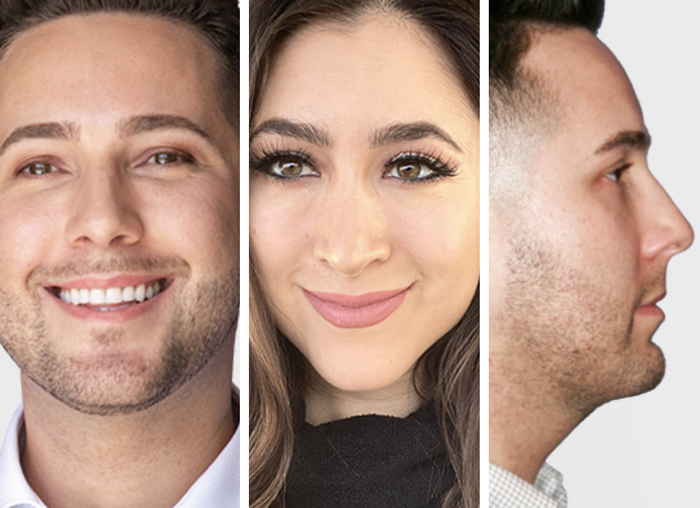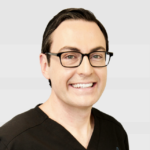Rhinophyma is a condition of the nose, predominantly in the thicker skin at the tip, that manifests as an obvious enlargement – which is sometimes dramatic. The exact etiology of rhinophyma is incompletely understood, but it seems to be related to acne rosacea, occurs almost exclusively in men, and is more frequent in heavy alcohol drinkers. Acne rosacea (also called “rosacea”) is a skin condition that is different from acne vulgaris (adolescent or pubertal acne, which manifests as comedones and cysts). This condition results in a significant increase in the number of tiny blood vessels in the skin surface, with a noticeable redness or flushed appearance over time. In addition, the pilosebaceous glands (oil glands) become enlarged, giving the surface a bumpy or even “warty” looking appearance. There is some evidence to suggest that the presence of a mite, known as demodex folliculorum, plays an active role in the development of rhinophyma.
Explore our
Patient Gallery
*Actual patients in photos

Rhinophyma can have a significant and undesirable effect on the way the nose looks. Typically, the tip of the nose enlarges and becomes broader. The surface texture of the nose also changes, becoming bumpy and uneven. Often the skin color is redder than the surrounding face, and some larger blood vessels may be obvious to the naked eye on the surface. Treatment of rhinophyma can help to improve the appearance of the nose and reduce the growth and thickness of the skin at the tip. Multiple different treatment strategies have been described, though none is universally accepted as superior. Among the common approaches are ablative laser resurfacing (using a CO2 laser), cold knife resection, and electrocautery. In some cases, skin grafts may be helpful. Depending on the unique anatomy of the patient and the aesthetic goals, each of these treatments may have a role.
As a nose specialist, Dr. Ransom can help you treat rhinophyma. He offers his patients a unique ability to address both the internal and external parts of the nose. Recovery from rhinophyma treatment will depend on the exact areas addressed and techniques used. Topical and systemic medications may be necessary in severe cases. As a final note, it is important to remember that not all enlargements of the nose are rhinophyma and that any painful area or long-standing scab should be biopsied to check for skin cancer (most commonly basal cell carcinoma, which can be present in the same area). Dr. Ransom can discuss your treatment options during your consultation.
Please note that all patients are different and individual healing times and results may vary. The statements regarding procedures and recovery made here are general rules.
Dr. Evan Ransom is an Ivy League-educated and Ivy League trained Facial Plastic and Reconstructive Surgeon. He is a Double Board Certified Head and Neck Surgeon and Facial Plastic and Reconstructive Surgery and fellowship-trained in facial plastic, reconstructive, and laser surgery. His practice is in the San Francisco Bay Area, serving patients from San Francisco, Oakland, Marin County, Palo Alto, Silicon Valley, Walnut Creek, the East Bay, and all over Northern California.
 (415) 550-1077
(415) 550-1077 San Francisco
San Francisco




